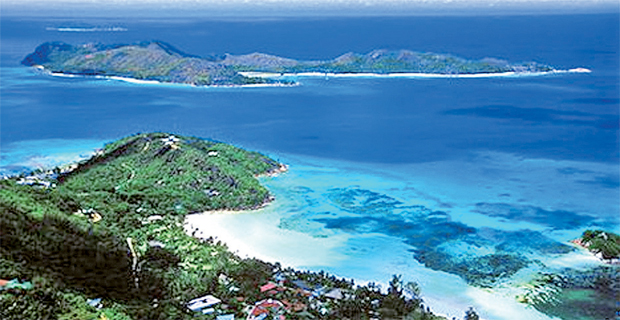
Seychelles – Sri Lanka : Meeting maritime conservation goals
Water is an important resource, key to development and life. Fresh water is being depleted or contaminated by pollution daily. Pollution and sediment due to land activities degrade coastal zones and marine areas, especially corals and fish. We need to work together with clear guidelines and monitoring programmes to make sure we are doing our best to safeguard water resources. The conference tries to address these issues and find financing, especially for developing countries. It is the first time that this conference is organised in our region. The organising body – Global Environment Facility (GEF) – is financing huge projects around the world
Although relations between Seychelles and Sri Lanka go back about 27 years, there was a boost in diplomatic relations in the recent past with the opening of Sri Lankan and Seychelles embassies in 2014. Apart from cooperation in tourism, the most notable area of cooperation is in the maritime sector. Seychelles employs a large number of teachers from Sri Lanka apart from other professionals and has a sizeable Sri Lankan community working in Seychelles.
Seychelles’ economy mostly depends on eco-tourism and gives emphasis to environmental conservation and energy security. Seychelles Environment, Energy and Climate Change Minister Didlier Dogley spoke in detail with the Daily News about his government’s efforts to achieve energy conservation goals, while he was here to participate in the Inter-Water Resource Management Conference organised by the Global Environment Facility at Negombo, recently.
Following are extracts of the interview:

Seychelles Environment, Energy and Climate Change Minister Didlier Dogley
|
Q: What are the key areas under discussion at the conference?
A: Over 300 participants in the International Water Resource Management Conference, working on trans-boundary and marine water issues, share experiences at this conference to find ways for upscale financing and technology to tackle problems internationally.
Water is an important resource, key to development and life. Fresh water is being depleted or contaminated by pollution daily. Pollution and sediment due to land activities degrade coastal zones and marine areas, especially corals and fish. We need to work together with clear guidelines and monitoring programmes to make sure we are doing our best to safeguard water resources. The conference tries to address these issues and find financing, especially for developing countries. It is the first time that this conference is organised in our region. The organising body – Global Environment Facility (GEF) – is financing huge projects around the world.
One of the areas that we talked about is the high seas, especially between Seychelles and Mauritius. GEF will be providing assistance to resolve issues in this regard.
Q: Should we be worried at the rate at which climate change is affecting the environment?
A: We should be very worried. There is massive coral bleaching all over India and it can be seen in the South of Sri Lanka as well. Even Australia’s Great Barrier Reef is affected. If we lose our corals, we lose our marine life and this will erode coastal areas. Seychelles depends a lot, not only on tourism but also on fisheries. Our tourism depends on the quality of the coastal environment. So it is important to bring measures to protect our marine environment.
Q: Would mega projects such as land reclamation have detrimental impacts on marine life?
A: I think the process of how you do it needs to be very clear. Even in the Seychelles we had to reclaim land. But the way you do it should be a well thought-out process.
There needs to be an Environment Impact Assessment and people should be consulted.
There should also be an Economic Benefit Analysis to see if the project makes sense in the long term. But I don’t think reclamation is a totally bad thing but it needs to be thought-out properly and objectively.
Q: What are the Seychelles’ key energy conservation programmes?
A: We are very much for energy conservation and sustainable development. We are doing a study right now, after the government took a decision to go for 100 percent renewable energy. At the moment, we depend on fossil fuels and we import heavy oils for electricity.
That costs us about 10 percent of our GDP of our annual national budget. If you take that money and invest in solar and wind energy, we can become totally independent. Countries have signed the Paris Agreement to reduce their carbon footprint. We have obligations to meet. First you need to achieve energy security, which means you don’t depend on fuel from outside.
Q: How are the Seychelles and Sri Lanka cooperating on conserving the marine environment?
A: We’ve got excellent working relations with the government of Sri Lanka. The Colombo International Nautical Engineering College (CINEC) – the marine campus – has signed an agreement with our maritime school whereby our sea-men and women are trained to be able to manage and tap into our marine environment.
Our fisheries industry boats are being built in Sri Lanka. On the maritime side, there is a lot of cooperation between Sri Lanka and Seychelles.
Q: What are the best practices adopted by Seychelles for waste management and protecting bio-diversity?
A: We are concerned about bio-diversity. We have protected areas. It has a return for us since it can turn into eco-tourism magnets. We have an extensive protected area network and are investing in eco-tourism. We understand that when the environment is healthy, it can better withstand impacts such as climate change. We have been investing a lot on sewer management, the sea and rivers meet the required standards. We are working hard to recycle as much as possible. We have zero-waste targets. Waste is also collected and exported to India and China where they are recycled as we can’t recycle in Seychelles as our volume is too small. We are also working on recycling 50 percent of our organic waste to turn it into bio-gas to produce energy.
Q: There was talk in the recent past about Sri Lankan government plans to close its High Commission in Seychelles, established during the past government. How would this have impacted on relations between the two countries?
A: I can certainly speak on behalf of our side. We have an embassy in Colombo established about three years ago. We saw the potential of working together with Sri Lanka. In the past, we always turned to Sri Lanka. When we had a shortage of teachers, we asked Sri Lanka to help us out. Today, there are plenty of Sri Lankans working in Seychelles in various sectors such as education, engineering, tourism etc.
We have a new vision of a ‘Blue Economy’ to tap into sustainability in marine sectors. We believe there is a lot we can learn from Sri Lanka in the marine sector. This is why the government established an embassy here. We don’t have a lot of embassies in the region. We have one in India, one in China and one in Colombo. So the decision to open one here speaks volumes.
We want to align ourselves with Sri Lanka in some of the sectors. We believe in building cooperation between our two countries. This is why we opened an embassy and will keep it open as long as we can. In the past, developing countries always looked towards developed countries. But some of the solutions were not there. We can cooperate in the South between each other, because certain countries have made progress in one direction, while others in another direction depending on policies and interests. So it makes more sense for South-South cooperation. For us, Sri Lanka presents us with certain opportunities which we would like to pursue.
Q: How is Seychelles cooperating with Sri Lanka in Sri Lankan government investigations into fraud and corruption, especially with regard to offshore bank accounts in Seychelles?
A: Seychelles is already cooperating with the Sri Lankan government through the Finance Investigation Unit in Seychelles with regard to investigation into any fraud and corruption. Seychelles has signed the Organisation for Economic Cooperation and Development (OECD) guidelines for offshore banking.
We keep offshore dealings transparent. All information on transactions can be inspected and checked by authorised bodies.
For each account that is opened in Seychelles, owners have to be declared, unlike earlier. Every year, all jurisdictions are reviewed. If you look up the internet, you will see that Seychelles is one of the countries that is clean. If in doubt, authorised bodies can check transactions after a formal request.
The Seychelles government has been working with the Panama jurisdiction and there is definitely interest in the offshore banking system. We’ve been following all the international rules, making sure that our systems are clean. We have made sure that we are not allowing the wrong people into our country. So if there is any investigation, Seychelles will cooperate as long as it is reciprocal on both sides.
Source:19 May 2016 Daily News (Sri Lanka)
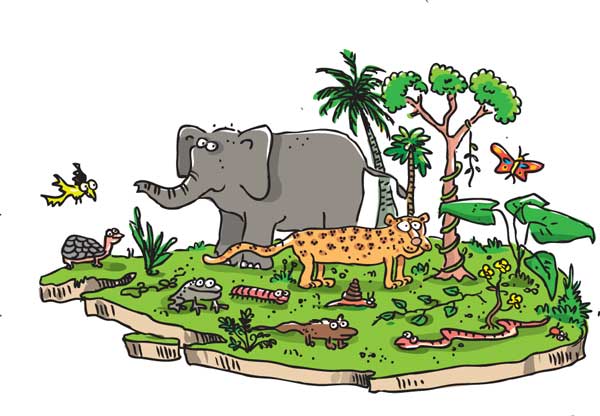
Let us protect our biodiversity
On Sunday May 22, the international community marks an important day but unfortunately not many people are aware of its deep significance. The United Nations has proclaimed May 22 as the International Day for Biological Diversity (IDB) to increase understanding and awareness of biodiversity issues. In December 2000, the UN General Assembly adopted May 22 as IDB, to mark the adoption of the text of the Convention held on May 22, 1992 by the Nairobi Final Act of the Conference.
This year’s theme is, ‘Mainstreaming Biodiversity; Sustaining People and their Livelihoods.’ For those who do not know or do not care, Biological diversity or biodiversity is the term given to the variety of life on Earth. It is the variety within and among all species of plants, animals and micro-organisms and the ecosystems within which they live and interact. Biodiversity comprises the millions of different species that live on our planet and the genetic differences within the species. It also refers to the multitude of different ecosystems in which species form unique communities, interacting with one another and the air, water and soil.
Biodiversity is explored at three levels: genetic diversity, species diversity and ecosystem diversity. According to science journals, Human alteration of the global environment has triggered the sixth major extinction event in the history of life and caused widespread changes in the global distribution of organisms. These changes in biodiversity alter ecosystem processes and change the resilience of ecosystems to environmental change. This has profound consequences for services that humans derive from ecosystems. The large ecological and societal consequences of changing biodiversity should be minimized to preserve options for future solutions to global environmental problems.
Humans have extensively altered the global environment, changing global biogeochemical cycles, transforming land and enhancing the mobility of biota. Fossil-fuel combustion and deforestation have increased the concentration of atmospheric carbon dioxide (CO2) by 30% in the past three centuries — with more than half of this increase occurring in the past 50 years. We have more than doubled the concentration of methane and increased concentrations of other gases that contribute to climate warming. In the next century these greenhouse gases are likely to cause the most rapid climate change that the Earth has experienced since the end of the last glaciation 18,000 years ago and perhaps a much longer time. Industrial fixation of nitrogen for fertilizer and other human activities has more than doubled the rates of terrestrial fixation of gaseous nitrogen into biologically available forms. Run off of nutrients from agricultural and urban systems has increased several-fold in the developed river basins of the Earth, causing major ecological changes in estuaries and coastal zones.
The UN in a message to mark this event says Biodiversity is the foundation for life and for the essential services provided by ecosystems. It therefore underpins peoples’ livelihoods and sustainable development in all areas of activity, including economic sectors such as agriculture, forestry, fisheries and tourism, among others. By halting biodiversity loss, we are investing in people, their lives and their well-being.
The thirteenth meeting of the Conference of the Parties to the Convention on Biological Diversity (COP 13) to be held in Cancun, Mexico from December 4 to 17 this year will focus on the mainstreaming of biodiversity within and across sectors. This is closely linked to this year’s IDB theme.
According to the latest figures, Plant diversity and endemism in Sri Lanka are quite high. Of 3,210 flowering plants belonging to 1,052 genera, 916 species and 18 genera are endemic.[3] All but one of Sri Lanka’s more than 55 dipterocarp (Sinhalese “Hora”) are found nowhere else in the world. Sri Lanka’s amphibian diversity is only becoming known now. Sri Lanka may be home to as many as 140 species of amphibians. More than 50 known freshwater crabs are confined to Sri Lanka.
Though most Sri Lankans are not aware of this, the neo-colonial economic power blocks are quite aware. Experts and companies from those countries have been making subtle attempts to exploit Sri Lanka’s rare biodiversity. The national government needs to closely monitor this area and ensure that the full benefits of Sri Lanka’s biodiversity are obtained by our people for the common good of the country – (Source 19 May 2016- Daily Mirror (Sri Lanka): http://www.dailymirror.lk/109718/Let-us-protect-our-biodiversity#sthash.sfnjiZ6n.dpuf)
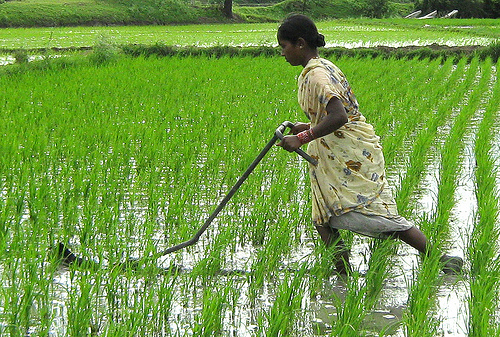
WFO Calls for Farmer-Centred Sustainable Development
LIVINGSTONE, Zambia, May 09 (IPS) – Over 600 delegates representing at least 570 million farms scattered around the world gathered in Zambia from May 4-7 under the umbrella of the World Farmers’ Organisation (WFO) to discuss climate change, land tenure, innovations and capacity building as four pillars on which to build agricultural development.
Among the local delegates was Mary Nyirenda, a farmer from Livingstone, where the assembly was held.
“I have a 35-hectare farm but only use five hectares due to water stress. With one borehole, I am only able to irrigate limited fields. I gave up on rainfall in the 2013/14 season when I lost about five hectares of maize to drought,” Nyirenda told IPS.
Privileged to be part of the 2016 WFO General Assembly, Nyirenda hoped to learn innovative ways to improve productivity and market access for her garden and poultry produce. But did the conference meet her expectations?
(Mary Nyirenda in her garden at her farm in Livingstone, Zambia. Credit: Friday Phiri/IPS)
“Yes it has, especially on market access. I’ve learnt that working as groups gives us a strong voice and bargaining power. I’ve been struggling on my own but now I understand that two is better than one, and so my task from here is to strengthen our cooperative which is still disjointed in terms of producer partnerships,” said Nyirenda, emphasising the power of farmer organisations – for which WFO exists.
Convened under the theme ‘Partnerships for Growth’, the clarion call by delegates throughout the conference was to change the narrative that, while they are at the centre of a multi-billion-dollar food sector, responsible for feeding the whole world, farmers are the world’s poorest people.
And WFO President Evelyn Nguleka says the situation has to change. “It is true that farmers in almost all corners of the world constitute the majority poor, but the question is why?” asked Nguleka while responding to journalists during the closing WFO General Assembly Press briefing.
She said the meeting established that poor organisation and lack of information were the major reasons for farmers’ lack of progress, noting, “If farmers remain in isolation, they will continue to be poor.”
“It is for this reason that we developed a legal tool on contract farming, which will be mostly useful for smallholders whose knowledge on legal matters is low, and are easily taken advantage of,” said David Velde, president of the National Farmers Union in the U.S. and a board member of WFO.
Velde told IPS that various tools would be required to help smallholders be well equipped to fully benefit from their work, especially in a world with an unstable climate, a sub-theme that found space in all discussions at the conference due to its multifaceted nature.
With technology transfer being one of the key elements of the sustainable development agenda as enshrined in the Paris climate deal, delegates established that both innovation and capacity building for farmers to improve productivity cannot be discussed in a vacuum.
“Agriculture is indeed a global sector that needs serious attention. The fact that a world farmers’ organization exists is a sign that food production, food security, climate change are global issues that cannot be looked at in isolation. Farmers need information on best methods and technologies on how best to enhance productivity in a climate conscious manner,” said Zambian President Edgar Lungu in his address to the WFO General Assembly.
In the world’s quest to feed the hungry 793 million people by 2030, and and the projected population growth expected to reach 9.6 billion by 2050, more than half in Africa, WFO is alive to the huge task that its members have, which can only be fulfilled through increased productivity.
“WFO is in recognition that the world has two conflicting issues on face value—to feed the world and mitigate climate change. Both require huge resources but we believe that it is possible to tackle both, through increased productivity using latest technology,” said William Rolleston, president of the Federated Farmers of New Zealand.
Rolleston, who is also Vice President of WFO, told IPS that while WFO’s work does not involve funding farmers, it helps its members to innovate and forge partnerships for growth.
It has long been recognised globally that climate change, if not tackled, could be a barrier to the achievement of Sustainable Development Goals (SDGs). And this presented, perhaps, the hardest of choices that world leaders had to make—tackling climate change, with huge implications on the world’s productive capacity, which has over the years largely relied on a carbon intensive economy.
By approving the SDGs and the historic climate agreement last year, the world’s socio-economic agenda is set for a complete paradigm shift. However, WFO President Evelyn Nguleka wants farmers to remain the focus of the world’s policies.
“Whatever changes the world decides moving forward, it should not be at the expense of farmers to survive and be profitable,” she stressed.
For Nyirenda, access to markets holds the key to farmers’ productive capacity, especially women, who, according to FAO, constitute half of the global agricultural labour force, while in Africa, the figure is even higher—80 percent.
“My interactions with international organisations such as IFAD and others who are interested in women empowerment was a serious-eye opener moving forward,” she said.
Source: Inter Press Service–(May 2016)
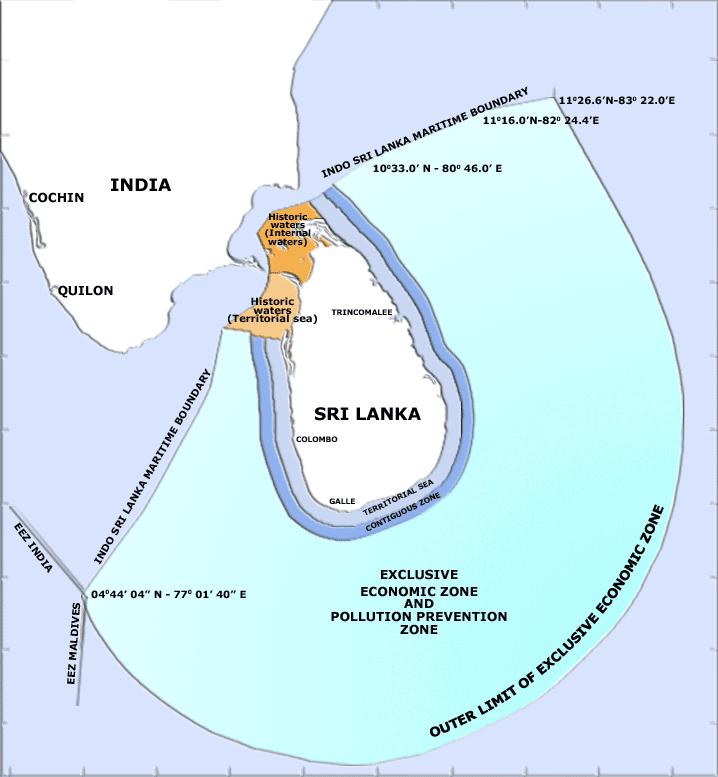
Sri Lanka to declare fish habitats as protected zones
Sri Lanka intends to better protect fish habitats around the island by declaring them as protected zones in order to safeguard the resources for the future, said Udaya Senevirathne, Secretary to the Ministry of Mahaweli Development and Environment.
Government policy is to ensure the sustainability of marine resources for economic development and conservation, he told the 8th GEF Biennial International Waters Conference that began in Sri Lanka on Monday.
“We hope to protect fishing areas around the island to practice sustainable fisheries, and declare some fish habitats that contain fisheries resources for the future as protected zones.”
Senevirathne said Sri Lanka is party to the Bay of Bengal Large Marine Ecosystem Project.
“The Bay of Bengal is an important source of food and income for Sri Lanka.”
(Source: Date 11-05-2016 Economy Next http://www.economynext.com/Sri_Lanka _to_declare_fish_habitats_as_protected_zones-3-4945-9.html)
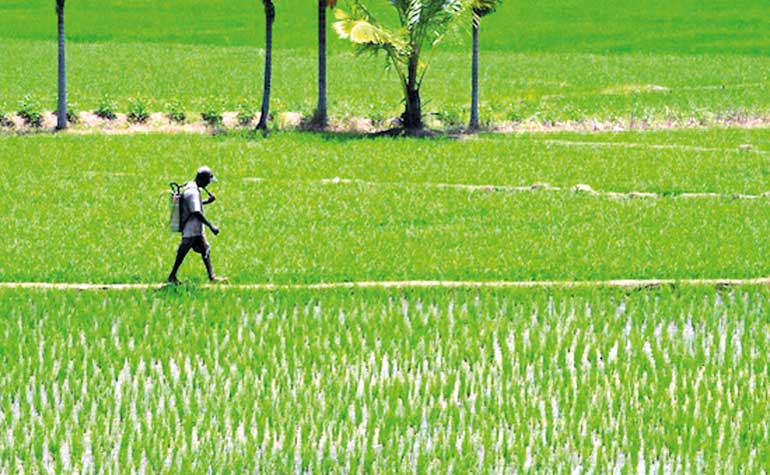
As the climate shifts, tradition threatens Sri Lanka’s rice harvest

Thomson Reuters Foundation: In mid-April, at the same time of year as their families have done for generations, Sri Lanka’s paddy farmers started cultivating their rice fields.
But this year, that may be too late.
President Maithripala Sirisena has warned Sri Lanka’ farmers that they may run out of water before their crops are ready to harvest. Devotion to tradition – in particular, planting spring crops after a traditional New Year’s holiday in mid-April – could now prove devastating, he said.
But many farmers are so far not convinced that old schedules need to change to match new climate patterns – a problem many countries around the world face as they try to adjust to changing weather patterns.
Ranjith Sumanadasa, 50, a paddy farmer from Rajanganaya region in Sri Lanka’s north-central province, has been cultivating his rice for close to four decades based on traditional timetables.
“I learned from my father that after the March harvest we will celebrate Avurudu, and then prepare the fields around a week or two later, then the water comes,” he said. “There is no other way I know of.”
In early April, at a public rally in his native Polonnaruwa District, Sirisena explained how he had tried to convince Sri Lanka’s rice farmers to start cultivating a few weeks earlier than normal, to take advantage of recent rains that had filled some of the country’s reservoirs almost to capacity.
Sticking to the traditional timetable, he said, would mean losing much of that needed water to evaporation.
“I instructed the Water Management Committee to release water for paddy farmers as soon as possible,” Sirisena said on 2 April. “But the paddy farmers remain unmoved. They want to start the cultivation after the (traditional) New Year.”
Rains during the last weeks of March filled some reservoirs in the north and central parts of the country. As authorities released water from hydropower reservoirs to generate electricity, they also sent some to the smaller irrigation reservoirs to water rice fields, in the hopes the farmers would take advantage and use it right away.
But farmers instead waited over two weeks before using it, Sirisena said. With the island experiencing temperatures between 2 degrees Celsius and 4 degrees Celsius above average, according to the Meteorological Department, some of that water was lost.
“Because of the hot temperatures we are losing hundreds of cubic meters of water daily due to evaporation,” the president told the gathering in Polonnaruwa District. “You have to reconsider getting into the fields before the end of the month,” he pleaded.
Harvests evaporating?
When Sirisena spoke to the country’s paddy farmers in early April, the main irrigation tanks in the north central and central provinces were at around 80% capacity. But by the third week of April – when farmers wanted to start watering their crops – the levels had dropped by 20%, officials said.
Water management officials estimate that close to 300 million litres of water were evaporating daily across Sri Lanka. That could mean trouble for the paddy farms, which cover over 10% of the country’s land area.
“You will have to bear responsibility if there is a water shortage mid-season,” the president told farmers.
To make matters worse, Sir Lanka has experienced below-average rains across most of the island through April, according to the Met Department. May is also predicted to be unseasonably dry.
In 2014, a similar spell of dry weather hit Sri Lanka’s rice farmers, resulting in a harvest of 3.3 million tons, 17% less than the year before. Although Sri Lanka’s farmers are aware of the shift in the country’s climate patterns – and the potentially dire consequences – many refuse to change the way they farm.
Sri Lanka’s paddy farmers have long followed a cultivation schedule based on two monsoon seasons: Maha, between November and March, and Yala, between April and October. Based on that timetable, paddy farmers begin to prepare their fields for cultivation only after Avurudu, the Sinhalese and Tamil New Year that falls between 13 and 14 April.
According to Namal Karunaratne, national organiser of the All Ceylon Peasants’ Federation, the country’s monsoons used to bring around 4.5 million metric tons of rain each year.
But the seasonal rains have become unreliable, with one study by the Indian Institute of Tropical Meteorology suggesting rainfall over the Indian subcontinent has decreased between 20 and 30% over the last century.
“Our farmers are yet to get used to these changes. They are still used to the government providing water on time,” Karunaratne said. “They are not used to water management.”
(Source 11-05-2016 Daily FT -Sri Lanka : http://www.ft.lk/article/540683/As-the-climate-shifts–tradition-threatens-Sri-Lanka-s-rice-harvest#sthash.Gblltch0.dpuf)
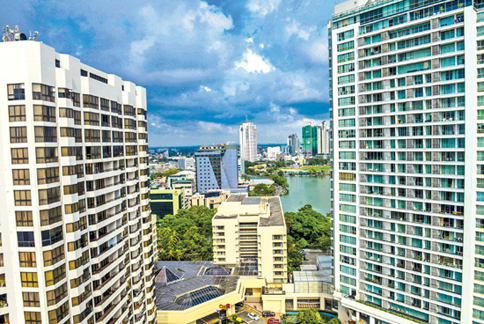
New laws soon for sustainable development
Sri Lanka will soon introduce a new law on sustainable development which will help move the country towards more innovation and future-orientated thinking to inspire better buildings and businesses, Deputy Foreign Minister Dr. Harsha de Silva said.
The new law will come into effect with the launch of the proposed Development Agency. With the introduction of this new law Sri Lanka will become one of the first countries in Asia to legislate sustainable development, Dr. de Silva told Sunday Observer Business.
It is now at the last stage of vetting in the legal draughtsman’s office. “I personally got involved in writing the new law and worked closely with the Attorney General’s department. We wanted to incorporate the objectives of the sustainable development goals.
“What that means is environment and sustainability becomes something that gets incorporated in the body of the text rather than in an appendix. Therefore, green technology is going to be very important in the decisions we make in particular in the megapolis and other urban development projects in Sri Lanka. Clean technology and sustainable development together will help create good and quality jobs which are a major necessity in our country,” Dr. de Silva said. Currently there is no such law or policy in Sri Lanka.
“This move will encourage foreign investments as the investors are assured of a proper monitoring and coordinating body,” he said.
The government is in the process of setting up two key agencies – the Agency for Development and the International Trade Agency.
An International Trade Agency will be set up, with representation of the Foreign Ministry and Export Development Board, and the Department of Commerce.
Sustainable development has become necessary for all economic policymakers and stakeholders at the national and international levels to incorporate the concept of sustainability into their development strategies.

(Green technology – is important in the decisions we make in particular on the megapolis and other urban development project)
In Sri Lanka there are about 87different approvals to be taken from various different organizations prior to launching development projects.
The agency will coordinate and make sure that each individual agency has a plan for their institution.
If it is the Water Board or the Transport Board — whatever it is, we want to ensure they have followed the sustainability laws in their key performance indicators. It will be a monitoring process of sustainable development of the country and responsibilities are entrusted to every organization and investment project.
Parliament has power in ensuring that every investment project is green and sustainable.
(Source 08-05-2016 Sunday Observer-Sri Lanka )
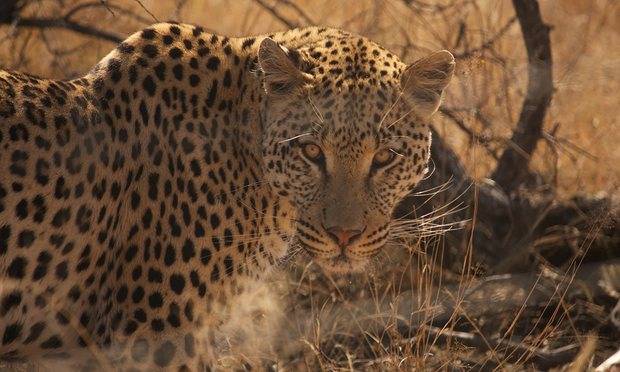
Leopards have lost 75% of their historical habitat
New research shows the big cats’ global range has shrunk by a shocking amount over the last 250 years.
(Photograph: Joseph Lemeris Jr/ZSL)
The area of the world roamed by leopards has declined by three-quarters over the last two and a half centuries, according to the most comprehensive effort yet to map the big cat.
Researchers said they were shocked by the shrinking of the spotted hunter’s range, and that the decline had been far worse for several of the nine subspecies of leopards and in some parts of the world.
“We found the leopard had lost 75% of its historical habitat, we were blown away by that, it was much more than we feared,” said Andrew Jacobson, a conservationist at the Zoological Society of London and lead author of a new study on their range published in the journal PeerJ.
“Our goal has to be to raise consciousness about the plight of the leopard, it’s been flying under the conservation radar for a while. We hoped to raise its profile and say ‘this cat needs your attention’.”
The new work is the first known attempt to draw up a global, historical map of the leopard. Jacobson and researchers found that in 1750 it occupied a vast 35m sq km (13.5m sq mile) area throughout Africa, the Middle East and Asia. But after centuries of habitat loss and hunting caused by humans, that area shrank to just 8.5m sq km.
Leopards in Asia have been particularly badly hit, with six regions losing over 95% of habitat where the species has been, in Jacobson’s view, “almost completely wiped out”.
There appeared to be a clear link between Asia’s economic development and the leopard’s decline there, he said. “South-east Asia and China have been developed for a long period of time and that’s seriously constricted habitat in that area for decades. We worry this will be the trend we will see in Africa in coming decades, as economies grow.”
Even in Africa, the paper found, losses varied greatly, with their range decreasing 99% in North Africa, up to 95% in West Africa but only up to 51% in Southern Africa.
Leopards are a famously reclusive but adaptable species, living nocturnally and hunting a wider variety of prey than other species. They also appear more capable than other big cats at adapting to environments transformed by humans, with leopards living in the outskirts of Mumbai and Johannesburg.
There are no reliable population estimates but it is thought there are over a 100,000 left in Africa and perhaps fewer than 10,000 in Asia.
Jacobson, who is also part of theNational Geographic Society’s Big Cats Initiative, said it was not too late for leopards to bounce back. “I think the leopard can come back. The leopard is an incredibly adaptable animal, we just need to ease off on the hunting pressure, the persecution. They’re cats, they breed pretty well.”
But greater conservation efforts were needed to stop them suffering the dramatic declines seen by some other species, he said. “When people think of endangered animals they think of tigers, elephants, rhino. Thankfully the leopard isn’t in that category yet, and if we are more proactive about them we can stop them being in there.”
The new study – Leopard (Panthera pardus) status, distribution, and the research efforts across its range – examined 6,000 records at 2,500 locations, from over 1,300 sources, including other scientific literature and experts’ data, to draw up a detailed reconstruction of leopards’ range today and in 1750.
(Source : 09-05-2016 The Guardian http://www.theguardian.com/environment/2016/may/ 04/leopards-have-lost-75-percent-of-historical-habitat)
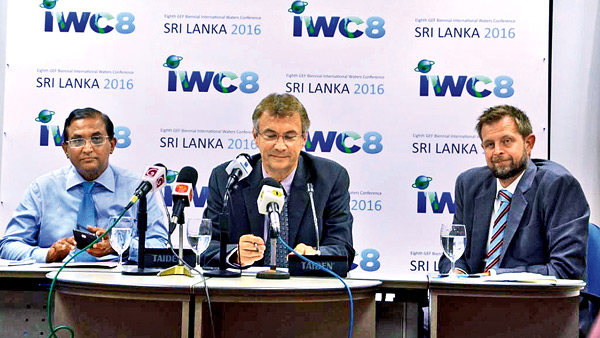
Global Environment Facility IWC In Sri Lanka
The 8th Global Environment Facility (GEF) Biennial International Waters Conference (IWC) will be held in Sri Lanka from May 9 to 13 with representatives from over 80 countries. The week-long conference themed Scaling Up Investments from Source to Sea in the Context of Achieving the SDGs, is jointly organised by the GEF, the Mahaweli Development and Environment Ministry and the United Nations Development Programme (UNDP). IWC held for the first time Sri Lanka, will be graced by President Maithripala Sirisena and the CEO and Chairperson of GEF Dr. Naoko Ishii.
Mahaweli Development and Environment Ministry Secretary Udaya Senevirathne, GEF International Waters Focal Area Environmental Specialist Christian Severin and UNDP Country Director Joern Soerensen joined a briefing to inform the media about the upcoming conference.
Udaya Senevirathne said “safeguarding and managing our water resources remain a priority for the President, who oversees this portfolio and with his guidance, we are keen to partner with GEF and UNDP to host this conference in Sri Lanka for the first time”. He said, “the conference will provide the international practitioners the opportunity to learn about good water management practices, coastal zone management, protected areas and alternative livelihoods in Sri Lanka”.
The conference is expected to bring 250 foreign delegates, including government ministers from Seychelles, Maldives and representatives of GEF beneficiary countries, non-governmental organizations, transboundary waters management institutions, United Nations Agencies, GEF International Waters project managers and staff, and the international private sector. Over 80 countries will be represented at the conference.
UNDP Country Director Joern Soerensen said “With the new global development commitments in mind, IWC organised under the theme Scaling Up Investments from Source to Sea in the Context of Achieving the SDGs will be very important. Especially as it will look at two SDGs—Ensure access to water and sanitation for all and Conserve and sustainably use the oceans, seas and marine resources— with learning tracks devoted to catalysing transformation and scaling up investments; strengthening governance processes to sustain project interventions; and data to policy”.
The GEF Biennial International Waters Conference is the signature learning event for the GEF International Waters portfolio of projects. The IWC objectives are to facilitate cross-sectoral and portfolio-wide learning and experience sharing. Participants sum up progress achieved and also look to the future of programming within and beyond the GEF International Waters focal area.
GEF International Waters Focal Area Environmental Specialist Christian Severin noted, “this 8th IWC will represent about 70 active GEF International Waters projects and will strive to solicit advice from the existing GEF International Waters portfolio on burning issues related to international waters management, and to assist in building participant capacity in key management and technical areas”.
Christian Severin said, “At this conference we are proud to celebrate 25 years anniversary of the GEF and the International Waters Focal Area. With a GEF International Waters portfolio consisting of 242 projects with a portfolio amounting to a total of $10 billion in combined GEF and cofinancing, the GEF International Waters will continue to deliver substantial results and impacts on the local, national and regional level.
The GEF, as the largest financier of cooperation in shared waters systems, occupies a unique space in the International sphere to facilitate countries delivery towards a suite of the SDGs, with a specific focus of SDG 6 and 14”, in the process leading to sustainable management of shared aquifers, lakes, rivers, Large Marine Ecosystems and Open Oceans.
( Source 6 May 2016-Daily News-Sri Lanka)
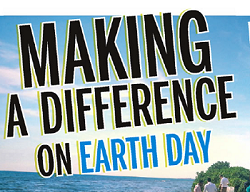
Making A Difference on Earth Day
Ozo Colombo celebrated its commitment for a greener environment by organising a beach-cleaning activity on Marine Drive near the Wellawatte area, commemorating Earth Day.
Over 50 volunteers from Ozo Colombo and members of the Rotaract Club cleaned up more than 300 kilos of garbage – including plastic bottles, bags, slippers, shoes and all non-biodegradable items to provide a foundation of a cleaner, healthier and more sustainable coastal environment for us all.
Abdul Qadir Uvais, the country manager for Earth Hour Sri Lanka also joined the movement.
( Source 6 May 2016-Daily News-Sri Lanka)
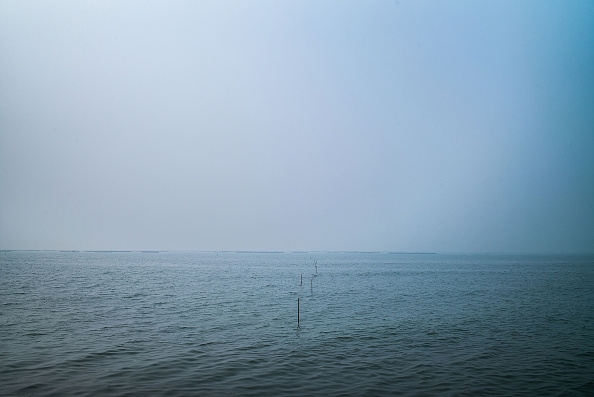
How Climate Change Affects Ocean’s Oxygen Level
The continues global warming due to climate change has been known to take its toll to Arctic, melting ice caps at an increased rate, but a new study suggests that the warming climate may be sapping considerably amounts of oxygen from the ocean.

(Photo : Lam Yik Fei/Getty Images)
According to the study published in the journalProceedings of the Royal Society B, scientist have long known that the warming climate can sap oxygen from the ocean, but they have discovered that a considerable amount of oxygen reduction in some oceans are already discernable, and by 2030 and 204 the loss of oxygen level across large oceans around the world will become more apparent.
With the reduction of the ocean’s oxygen level, marine species such as fishes, crabs and squids will have more difficulty of breathing, which can result to the sudden death and development of larger dead zones where no marine life can live.
“Loss of oxygen in the ocean is one of the serious side effects of a warming atmosphere, and a major threat to marine life,” said NCAR scientist Matthew Long, lead author of the study, said in a statement.
If the atmosphere becomes warmer than usual, oceans ability to draw oxygen from the atmosphere will be inhibited leaving it dependent to its other source of oxygen-the photosynthesizing phytoplankton.
In order to have a better grasp in the natural heating and cooling cycles and complex systems of currents and upwelling of oceans, researchers utilized the National Center for Atmospheric Research’s (NCAR) Community Earth System Model. They ran the model multiples times for the years 1920 through 2100. The researchers accounted global warming by making slight manipulations in air temperature.
After running the model, researchers identified that the reduction of oxygen in the ocean that can be attributed to global warming is apparent in 2030.
“Since oxygen concentrations in the ocean naturally vary depending on variations in winds and temperature at the surface, it’s been challenging to attribute any deoxygenation to climate change. This new study tells us when we can expect the impact from climate change to overwhelm the natural variability,” Long concluded.
(Source : 29/04/2016 Nature World News http://www.natureworldnews.com/articles/21285/20160428/climate-change-affects-ocean-s-oxygen-level.htm)









